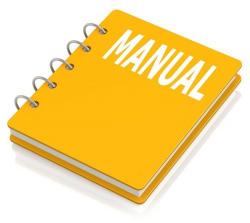Ford Taurus 2012 Factory Service & Shop Manual
Catalog:
Model:
Complete workshop & service manual with electrical wiring diagrams for Ford Taurus 2012. It's the same service manual used by dealers that guaranteed to be fully functional and intact without any missing page.
This Ford Taurus 2012 service & repair manual (including maintenance, overhaul, disassembling & assembling, adjustment, tune-up, operation, inspecting, diagnostic & troubleshooting…) is divided into different sections. Each section covers a specific component or system with detailed illustrations. A table of contents is placed at the beginning of each section. Pages are easily found by category, and each page is expandable for great detail. The printer-ready PDF documents work like a charm on all kinds of devices.
· P2D - Taurus, Front Wheel Drive (FWD), SE
· P2E - Taurus, FWD , SEL
· P2F - Taurus, FWD , Limited
· P2H - Taurus, All-Wheel Drive (AWD), SEL
· P2J - Taurus, AWD , Limited
· P2K - Taurus, AWD , SHO
· T - 3.5L, DOHC, turbo-charged, 4 valve, V6
· W - 3.5L, DOHC, 4 valve, V6
EXCERPT:
2012 Taurus
Workshop Manual
Quick Links
Introduction
Master DTC Chart
Specifications
Metrics
Torque Wrench Adapter Formulas
Acronyms
Alphabetical Index
Table of Contents
1: General Information
00: Service Information
2: Chassis
04: Suspension
05: Driveline
06: Brake System
11: Steering System
3: Powertrain
03: Engine
07: Automatic Transmission
08: Manual Transmission, Clutch and Transfer Case
09: Exhaust System
10: Fuel System
4: Electrical
12: Climate Control System
13: Instrumentation and Warning Systems
14: Battery and Charging System
15: Audio Systems
17: Lighting
18: Electrical Distribution
19: Electronic Feature Group
5: Body and Paint
01: Body
02: Frame and Mounting
…
Lower Arm
Removal and Installation
NOTICE: Suspension fasteners are critical parts because they affect performance of vital components and systems and their failure may result in major service expense. New parts must be installed with the same part numbers or equivalent part, if replacement is necessary. Do not use a replacement part of lesser quality or substitute design. Torque values must be used as specified during reassembly to make sure of correct retention of these parts.
1. Remove the wheel and tire. For additional information, refer to Section 204-04.
NOTE: Use the hex-holding feature to prevent the stud from turning while removing the nut.
Using a crowfoot wrench, remove and discard the lower ball joint nut.
· To install, tighten to 200 Nm (148 lb-ft).
2. NOTICE: Use care when releasing the lower arm and knuckle into the resting position or damage to the ball joint seal may occur.
Push the lower arm downward until the ball joint is clear of the wheel knuckle.
3. Remove and discard the lower arm forward bolt.
· To install, tighten the new bolt to 185 Nm (136 lb-ft).
4. Remove and discard the lower arm rearward nuts and bolts.
· To install, tighten the new nuts to 99 Nm (73 lb-ft).
· Install the new lower arm rearward bolts from the bottom of the lower arm bushing with the nuts on top.
5. If necessary, remove the lower arm rearward bushing. For additional information, refer to Lower Arm Bushing in this section.
6. NOTICE: The lower arm forward bolt must be tightened with the weight of the vehicle on the wheels and tires or damage to the bushings may occur.
To install, reverse the removal procedure.





